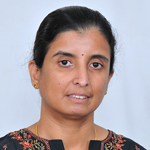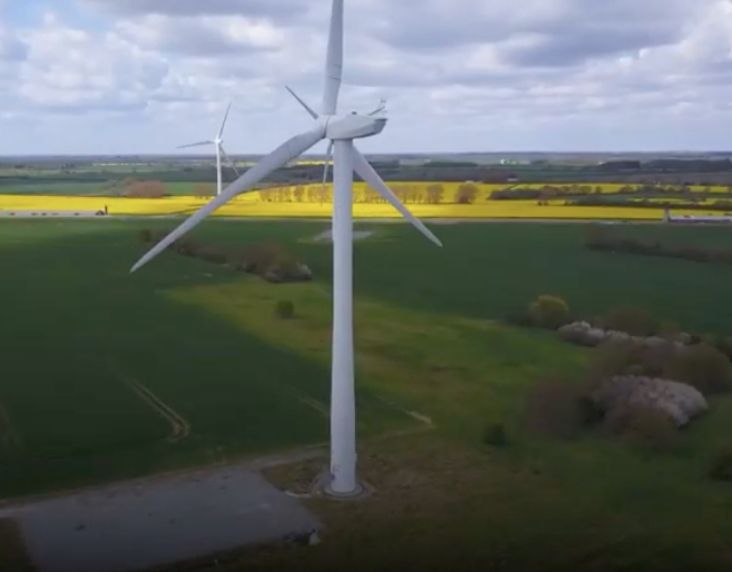Can Digital Enable a More Equal World?
June 23 – International Day for Women in Engineering
World War I changed a lot of things in the modern world. Machine guns, airplanes, submarines, armoured vehicles, chemical weapons; there was much new technology used to fight this war. Industrialization and mass production enabled all this.
As many men were drafted in to fight this awful war, there was a need to fill the industrial workforce, and women stepped in. From factory work to engineering, technology and design, women proved that they could do these jobs as well as the men, if not better.
At the end of the war, however, the men who returned took these jobs back. As these pioneering women realized the significant contributions they had made and could continue to make to the field of engineering and technology, they formed the Women’s Engineering Society in 1919, to enable other women to reach their potential in the technical field.
Today, June 23, is celebrated as the International Day for Women in Engineering.
Women & STEM
Women’s contributions to the STEM (Science, Technology, Engineering and Mathematics) field are not new. But just like they were expected to yield their jobs back to men at the end of the war, the patriarchal society of the previous centuries, meant that these contributions were sadly downplayed, overlooked, or downright usurped, by the men they worked with.
While many of us now know of Ada Lovelace, whose contributions to the computing world by laying the foundation of programming languages were only acknowledged many decades later, and of Rosalind Parker, whose discovery of the double helix was appropriated by Watson & Crick, here are other women whose work was not acknowledged:
- Milena Maric Einstein, the first wife of Albert Einstein, who was considered an even better scientist than he, and contributed significantly to his work, co-authoring or editing his early papers, while they got published only in his name. Einstein’s affair with another woman ended their marital relationship, and Milena was tragically left with no credit for her tremendous work.
- Hedy Lamarr, a woman of many talents, was a fine actress, and a serial inventor. During WWII, she co-invented a radio guidance system for torpedoes, which was later used by the Navy. Her spread-spectrum invention has been incorporated into modern digital technology such as WiFi and Bluetooth. Sadly, recognition for her work came only after her death.
- Lisa Meitner, who was Otto Hahn’s research partner on nuclear fission, was not given credit on the paper that he published solely in his name, which later led to a Nobel Prize for him, but no acknowledgement for her. As a Jew, Lisa was earlier forced to flee her home in Germany, and could therefore not claim the authorship credit that was her due.
- Mary Anderson invented windshield wipers in 1903, as a way to clear streetcar windshields of snow. When her invention was finally used for automobiles in the 1950s, her patent had expired and someone else took credit for it.
If all this makes you angry and frustrated, remember that such injustice still continues, even though the world has vastly improved from those times. The fact that these women were not given their due is not only unfair to them, but has also created an unfair environment for the women who have come after them – the injustice has perpetuated a bias that women are not interested or skilled in STEM fields, that they require “guidance” from men to work in these areas, and that they cannot be leaders here.
These women could have been great role models for our daughters as they come through the education system, perplexed about career choices. Today, less than 20% of the engineering workforce and less than 30% of the R&D workforce is made up of women.
Technology to the Rescue?
But not all is doom and gloom for women in technology. Technology herself, presents a solution. Digital technology is enabling access – to education, to employment, to resources, to funding. When used correctly, AI (Artificial Intelligence) and ML (Machine Learning) can fix some of our inherent biases to create a more level playing field.
Equalizing access:
The pandemic has taught us that digital technology can enable access in many ways. Children all over the world are now being taught online, and the power to use this technology to provide education anytime, anywhere, especially to girls who would otherwise not be allowed to leave their homes, or get the funds required to enroll in a school, or get the transport from a remote village to the nearest classroom, or be spared from domestic chores during normal school hours, is tremendous!
My friend, Mythily Ramesh, CEO of NextWealth, shows me how digital technology can be used to take computing jobs to the people in their locations, rather than force people to cities for a living. And women are a major beneficiary of this initiative.
Enabling networking:
“Networking” was considered an area where men excelled over women, enabling them to have an inside route to better jobs, quicker promotion, greater success. In the past, this may have happened in men’s clubs, or over men’s sports, over drinks after work, etc., where women were not always able to participate, either because the venues were exclusive to men, or because they had various other domestic responsibilities to handle outside work. While some of us may not have hesitated in going out for a “drink with the lads”, it was not an option for most women.
Today, I find that digital has completely leveled this playing field. Online work networks, professional women’s networks, school and college networks, community networks, are all thriving on the various apps we use – from Whatsapp to Linkedin to Facebook, Telegram and many more. Mentoring, job referrals, professional connects to solve work and other problems, contacts for outsourcing - all these are available without leaving home.
Work from anywhere
Work in the IT sector, especially in an “offshore country” like India, usually demands travel, and the ability to gain experience, and advance in your career is almost directly linked to your ability to travel. For many women, this poses a challenge, as they struggle to balance the demands of family and children with this. Today as the pandemic has shown, online meeting and collaboration technology enable us to work seamlessly, conduct meetings, do workshops and whiteboarding, all remotely, without travel.
Countering Bias
A couple of years ago, while researching unconscious bias, I came across an article that talked about how a large global firm had to scrap a project that tried to use AI to shortlist resumes for recruitment. The engine was trained by showing it resumes that human recruiters had shortlisted, and making it pick up their patterns of selection. Very quickly, it became apparent that the AI recruitment engine was hugely biased – it would not shortlist women! It recognized women from their names, and from subtle hints in their resume.
What the AI/ML engine really did was to draw patterns from our inherent biases, and amplify them manifold, showing exactly how bad we could get in our discrimination. But that’s what I find fascinating. Once we see how unreasonable we are with our biases, most of us would take steps to correct them. And that is what we can program these engines to do. To shortlist based on qualifications, experience, skills, rather than gender or race or country.
Wouldn’t it be great if we could have our own personal bot reading through what we write, listening to what we say, and presenting us with a summary at the end of each day or week to highlight when we’ve been insensitive or biased, and used words like manpower, manhours or manmade or only male pronouns, or excluded people that speak a different language or come from a different cultural background? No embarrassing callouts in public – just a quiet way to view and reflect and decide how to correct our biases.
Into that heaven of equality, my maker, let my world awake.





